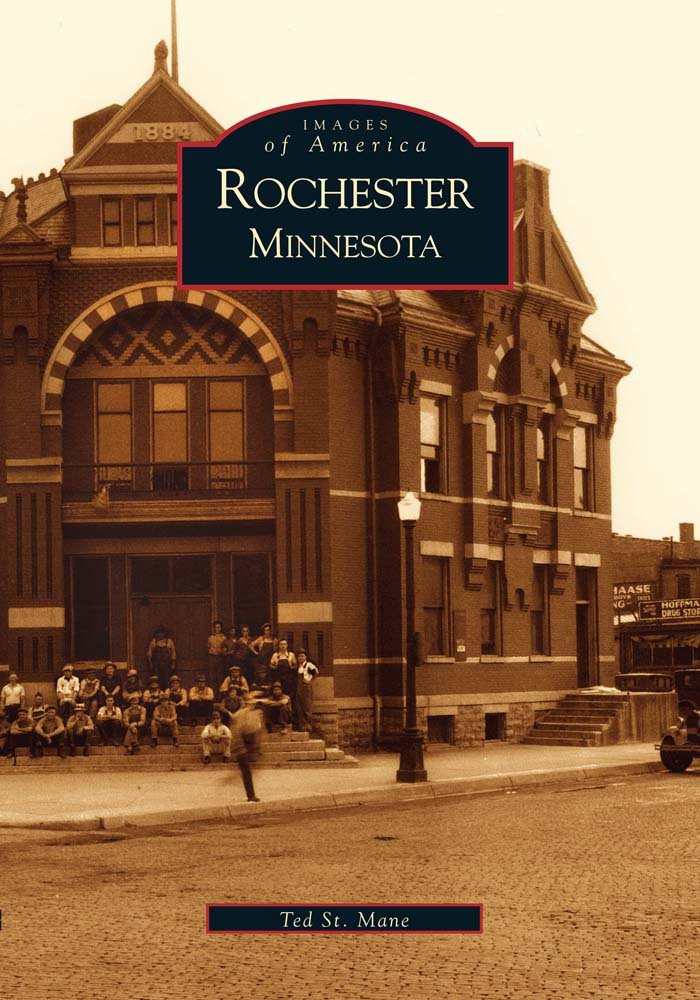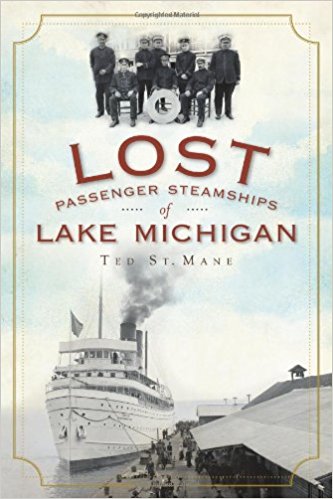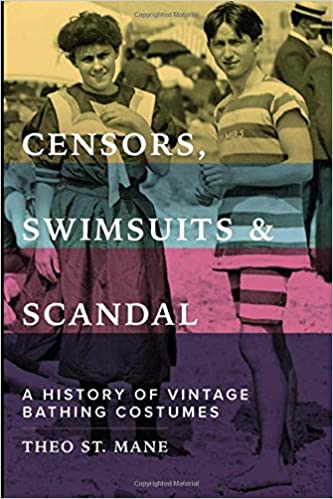Theo St. Mane is the author of nonfiction histories ranging from the passenger steamship era on Lake Michigan to the social history surrounding vintage bathing costumes. Theo’s interest in history has led him to explore and write about lost industries, communities important to him, and societal shifts. Available to speak on topics related to his books, Theo enjoys engaging with readers, authors, and history enthusiasts. Copies of all Theo’s books can be ordered via Amazon.com at the links below.
Rochester, Minnesota (Images of America)
by Ted St. Mane
Paperback 128 pages
Publisher: Arcadia Publishing (September 1, 2003)
Language: English
In 1869 The Minnesota Guide summed up Rochester, Minnesota as “a fine business point.” Today Rochester is not only a fine business point but also a world-class medical center, a technology town, and a city of such favorable charms and amenities that it has been repeatedly recognized as “the best place to live in America.” The story of Rochester’s journey from frontier crossroads to international destination is found in Rochester, Minnesota. With nearly 200 photographs and insightful commentary that help preserve the city’s rich history, this book is a tribute to the individuals and institutions that gave rise to this classic Midwestern city. The homesteaders of the 19th century, the founders of Rochester’s tradition of medical excellence, and many of the enterprises that contributed to Rochester’s growth are remembered here.
View on Amazon
Lost Passenger Steamships of Lake Michigan
by Ted St. Mane
Paperback 160 pages
Publisher: The History Press; 1st Edition (August 5, 2010)
Language: English
From the arrival of the first steamship to Lake Michigan in 1821 through the turbulent booms and busts of more than 130 years, passenger steamers of this bygone era provided an essential link for immigrants, excursionists, businesspeople and leisure travelers. On offer were dining, dancing, day trips and luxurious shipboard settings, but mishaps like storms, fires and shipwrecks were a persistent danger to passengers and crew alike. Through fascinating tales and splendid images, Lost Passenger Steamships of Lake Michigan presents the romantic and sometimes dangerous story of a vanished industry that once connected communities all long Lake Michigan’s shores.
View on Amazon
Lanesboro, Minnesota: Historic Destination (Images of America)
by Don Ward and Ted St. Mane
Paperback 128 pages
Publisher: Arcadia Publishing (November 18, 2002)
Language: English
In 1942, Pulitzer Prize-winning author Sinclair Lewis wrote that the Lanesboro area was “…worthy of Vermont in its sturdy quietude. Through all this district, secret little valleys branch off from the major valleys of the Root River, and there is room enough and view enough for 11,000 poets.” Promoted in the late 1860s to east coast investors as an idyllic retreat, Lanesboro was established as a resort community and soon realized an impressive boom due to its unparalleled waterpower. Progressing not as a tourist area, but rather along other avenues of commerce, the community once hailed as the ‘biggest little town in southeastern Minnesota’ fell off the fast track of growth before its charm could be diminished by too much progress. Today Lanesboro’s beautiful 1870s downtown is on the National Register of Historic Places, and the entire city is a haven for the arts-a showcase for the natural beauty that Sinclair Lewis touted more than sixty years ago.
View on Amazon

Censors, Swimsuits & Scandal
by Theo St. Mane
Paperback 99 pages
Publisher: Self Published (June 16, 2019)
Language: English
From the late eighteenth to early twentieth centuries rigid attitudes about how people ought to look and act elevated the discussion of swimsuits and beach wear from fashion news to social maelstrom. The societal debate over who ought to wear what while bathing grew so contentious that some communities employed censors to patrol their beaches. Fines and time behind bars were real possibilities if one were caught exposing more than the recommended amount of skin. From horse drawn bathing machines to the rebellions of beach going flappers, this book offers opportunities to examine societal norms and conflicts around bathing costumes that may seem silly now, but are useful in reminding us that our current freedoms have come through the struggles of earlier generations, and that further progress is only possible when repressive attitudes and laws are challenged by everyday people.
View on Amazon







